
The geometer moths are moths belonging to the family Geometridae of the insect order Lepidoptera, the moths and butterflies. Their scientific name derives from the Ancient Greek geo γῆ or γαῖα "the earth", and metron μέτρον "measure" in reference to the way their larvae, or "inchworms", appear to "measure the earth" as they move along in a looping fashion. A very large family, it has around 23,000 species of moths described, and over 1400 species from six subfamilies indigenous to North America alone. A well-known member is the peppered moth, Biston betularia, which has been subject of numerous studies in population genetics. Several other geometer moths are notorious pests.
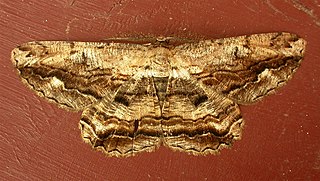
Scioglyptis lyciaria, the white-patch bark moth, is a moth of the family Geometridae that occurs in Australia. The species was first described by Achille Guenée in 1857.

Circopetes is a monotypic moth genus in the family Geometridae erected by Louis Beethoven Prout in 1910. Its only species, Circopetes obtusata, the grey twisted moth, was first described by Francis Walker in 1860. It is found in mainland Australia.
Dolerophyle is a monotypic moth genus in the family Geometridae described by William Warren in 1894. Its only species, Dolerophyle nerisaria, was described by Francis Walker in 1860. It is found in Brazil.

Epimecis is a genus of moths in the family Geometridae first described by Jacob Hübner in 1825.

Gastrinodes is a genus of moths in the family Geometridae erected by William Warren in 1898. Its species occur in Australia. Its type species is G. bitaeniaria, originally described as Geometra bitaeniaria.
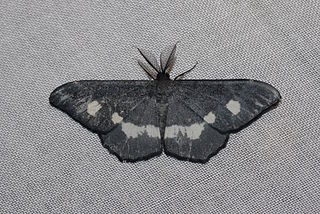
Hyposidra is a genus of moths in the family Geometridae first described by Achille Guenée in 1857.
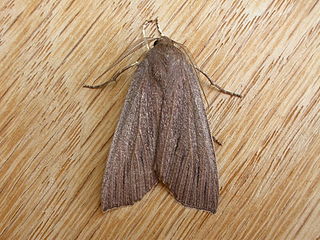
Palleopa is a monotypic moth genus in the family Geometridae. Its only species, Palleopa innotata, the finely-streaked crest-moth, is known from Australia, including Tasmania. Both the genus and species were first described by Francis Walker in 1866.
Pamphlebia is a monotypic moth genus in the family Geometridae described by Warren in 1897. Its only species, Pamphlebia rubrolimbraria, was first described by Achille Guenée in 1857. It is found in Sri Lanka, Borneo, Indonesia, Taiwan and Australia.

Phelotis is a monotypic moth genus in the family Geometridae erected by Edward Guest in 1887. Its single species, Phelotis cognata, the long-fringed bark moth, first described by Francis Walker in 1860, is found in Australia.

Symmacra is a monotypic moth genus in the family Geometridae described by Warren in 1896. Its only species, Symmacra solidaria, was first described by Achille Guenée in 1858. It is found in Indo-Australian tropics of India, Sri Lanka, Borneo east to Fiji, Samoa and Australia.

Zermizinga is a monotypic moth genus in the family Geometridae erected by Francis Walker in 1863. Its only species, Zermizinga sinuata, the lucerne looper or spider moth, was described by Warren in 1897. It is found in the Australian states of New South Wales, Victoria and Tasmania.
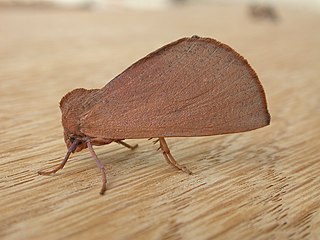
Fisera perplexata, the light-tan crest-moth, is a moth of the family Geometridae first described by Francis Walker in 1860. It is found in Australia.
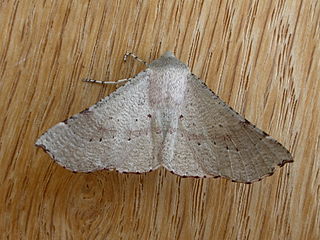
Oenochroma privata is a moth of the family Geometridae first described by Francis Walker in 1860. It is known from Australia.

Nisista serrata, the serrated crest-moth, is a species of moth of the family Geometridae first described by Francis Walker in 1857. It is found in Australia, including Tasmania, Victoria and South Australia.

Comostola laesaria is a moth of the family Geometridae first described by Francis Walker in 1861. It is found in Sri Lanka, India, Indochina, southern China, Taiwan, Sundaland, northern Australia and the Bismarck Archipelago.
Scopula perlata, the cream wave, is a moth of the family Geometridae. The species was first described by Francis Walker in 1861. It is found in Australia, as well as Indonesia.

Hyposidra talaca, the black looper or black inch worm, is a moth of the family Geometridae. The species was first described by Francis Walker in 1860. It is found from India to Indochina, Sundaland, Sulawesi, the Philippines, Sri Lanka, the Solomon Islands, Thailand, Taiwan, New Guinea and Australia, where it has been recorded from Queensland. It is a major defoliating pest in tea plantations.
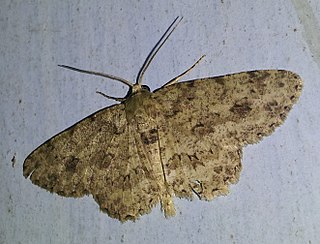
Ectropis bhurmitra, the tea twig caterpillar, is a moth of the family Geometridae. The species was first described by Francis Walker in 1860. A widespread Asian species, it is found around Indo-Australian tropics from India, Sri Lanka and Hong Kong, Taiwan, Thailand, New Guinea to Australian Queensland and the Solomon Islands.
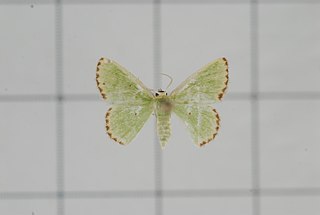
Eucrostes disparata is a moth of the family Geometridae first described by Francis Walker in 1861. It is found in Sri Lanka, Ethiopia, Taiwan, Japan and Australia.

















